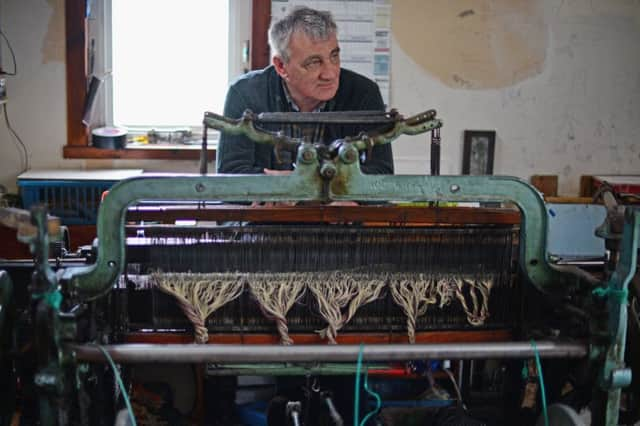Soaring demand sees Harris Tweed investment


Now the extraordinary renaissance that has transformed it into one of Scotland’s best exports looks set to step up a gear.
Growing worldwide demand has convinced officials in the Western Isles to make a major investment to address one of weavers’ long-standing bugbears: a lack of looms.
Advertisement
Hide AdAdvertisement
Hide AdDespite the fact that scores of people are eager to make a living by producing the cloth at home, a dearth of machines on the islands has halted their plans.
It comes at a time of major growth for the Harris Tweed industry. Only six years ago, it was suffering from an all-time production low of just 450,000 metres of a fabric a year.
Since then, however, production has more than trebled, with around 1.5 million metres of cloth expected to be made this year amid unprecedented interest from the US and Japan. With around 50 new weavers entering the industry since the turn of the decade, the 150 or so looms across the islands are constantly in use.
But Comhairle nan Eilean Siar is to step in and provide funding that will provide six new devices. Coupled with another six currently on order, the investment promises to significantly expand production capacity and meet the clamour from fashionistas.
Calum Iain Maciver, the council’s director of development, said: “The lack of available looms has been a challenge to the Harris Tweed industry since the sector began to revive and grow five years ago.
“Virtually all of the looms in circulation are in working production. Individual new-ordered looms command a purchase price in excess of £20,000, and on the rare occasion second-hand looms become available, their resale value is also considerable due to their scarcity.
“This situation is not only challenging to those looking to pursue a career in weaving but also places constraints on industry production levels.”
The authentic textile is hand-woven at home by the islanders of Lewis, Harris, Uist and Barra, using pure virgin wool that has been dyed and spun in the Outer Hebrides.
Advertisement
Hide AdAdvertisement
Hide AdThe explosion in demand from consumers has been driven by the material’s popularity among leading fashion houses such as Chanel, Vivienne Westwood and Yves Saint Laurent, with celebrity customers such as Madonna and Gwyneth Paltrow also helping to raise its profile.
The cottage industry currently employs approximately 380 people across Lewis and Harris, around 170 of whom are double-width weavers.
If the new tranche of funding is approved at a meeting of the local authority’s policy and resources committee on Wednesday, it is expected to create a further 12 jobs over the next two years.
Under the plans, the council’s Harris Tweed investment fund and Highlands and Islands Enterprise will contribute a total of £113,000 to buy the looms from the Tyne and Wear-based manufacturer, Griffiths Textiles Machinery. The machines will then be made available by the Harris Tweed Authority to prospective home weavers.
Last year, the Muaitheabhal Community Wind Farm Trust launched its own initiative to a tackle a loom shortage, buying three new machines and renting them to weavers.
This model has since been replicated by a further two community trusts – Horshader and Tolsta – both of whom have committed to purchasing three double-width looms.
It means that in the space of 12 months, the industry is set to benefit from 15 new looms in all, although Maciver said the expansion – which is supported by the three mills on Lewis – is being carefully monitored.
He added: “While all three mills report that they expect the current buoyant levels of production to be maintained into next season and beyond, it is also acknowledged that the sector is nearing production capacity, particularly weaving capacity.
Advertisement
Hide AdAdvertisement
Hide Ad“Achieving the balance between ensuring natural workforce succession and servicing market growth, whilst not diluting supply-end capacity, is an ongoing challenge.”
Brian Wilson, the chairman of Harris Tweed Hebrides, said the strategy was focused on a “sustainable and gentle rise” in production instead of “boom and bust”.
“The weavers are self-employed and so are rightly cautious about increasing the capacity too quickly,” he said.